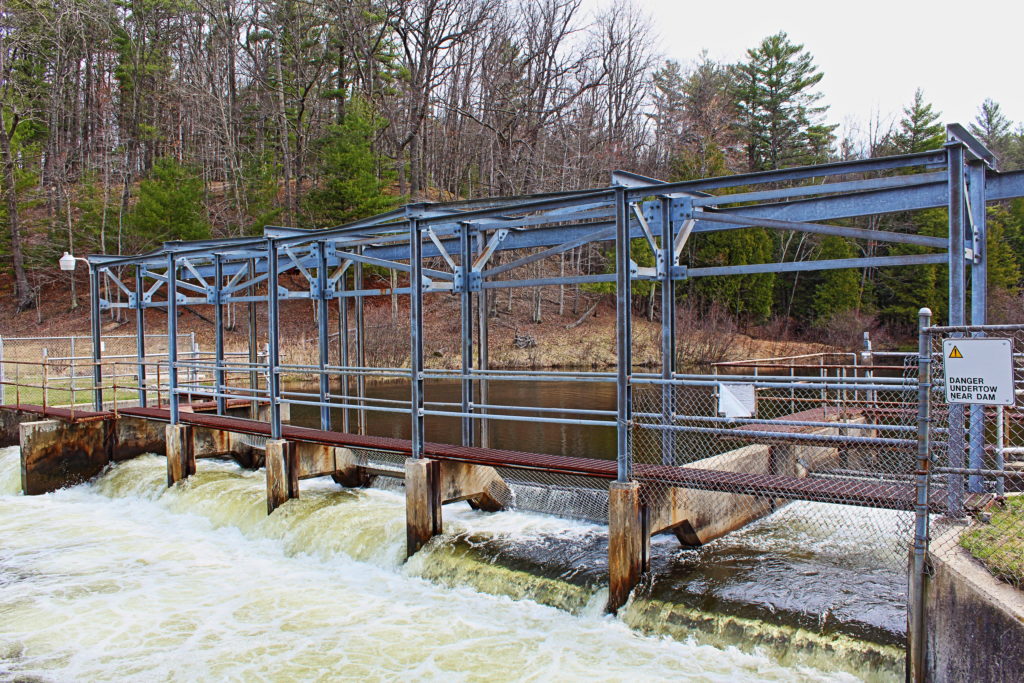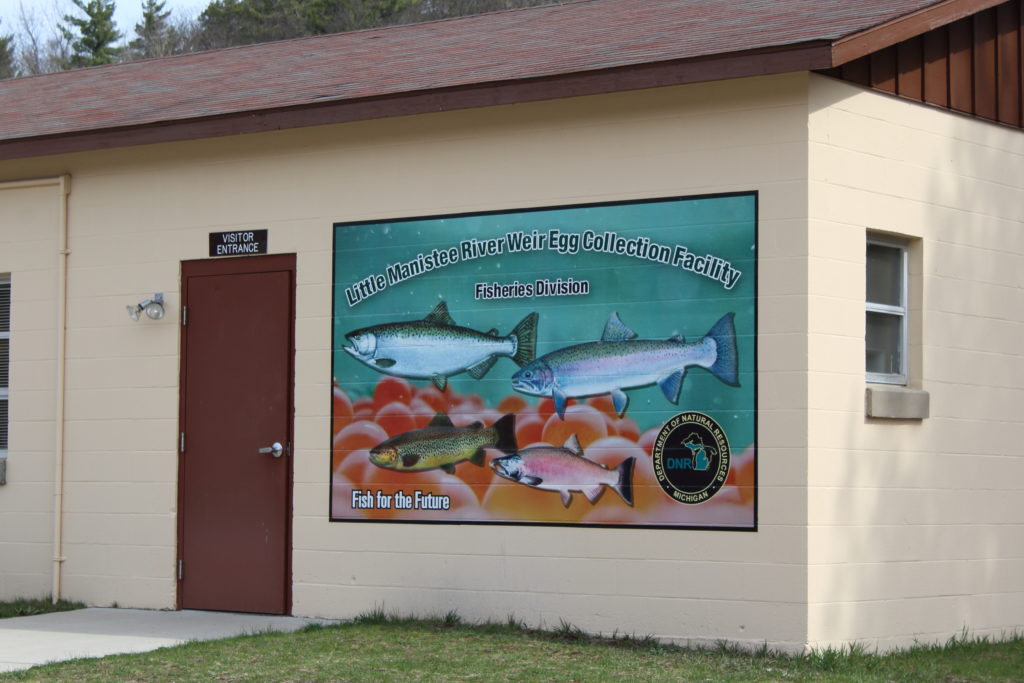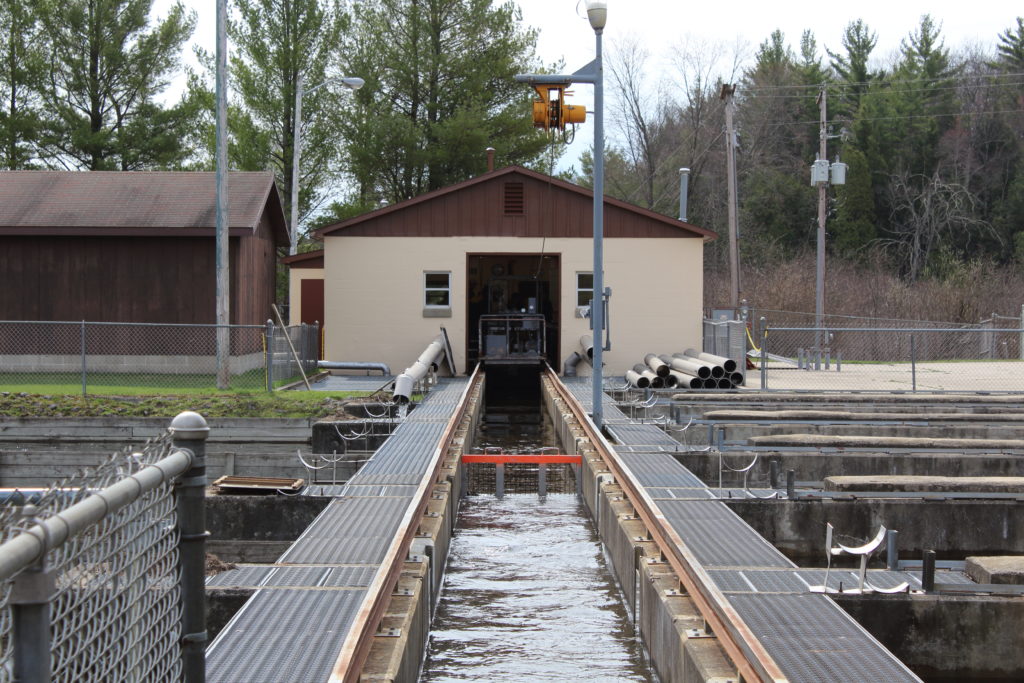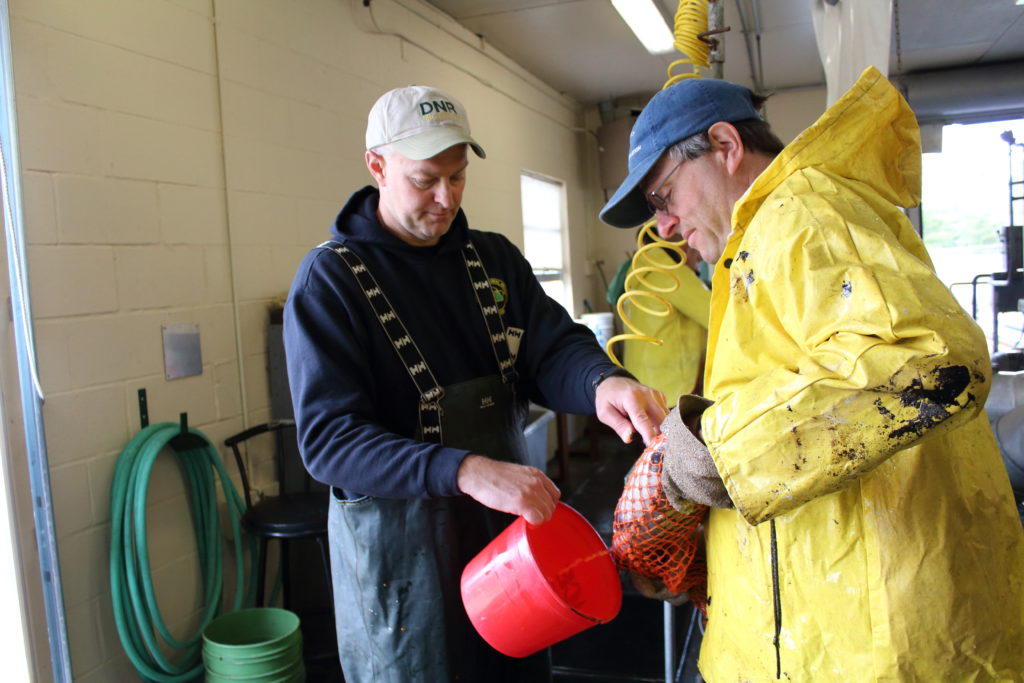Little Manistee River Weir Celebrates 50th Anniversary
2017 marks the 50th anniversary of the Little Manistee River weir. This egg-take facility is operated by the Michigan Department of Natural Resources in Michigan’s northwest lower peninsula. The weir was constructed in anticipation of spawning runs from the first stocking efforts in Lake Michigan of Pacific salmon in 1967. The Little Manistee River weir is credited for developing the Michigan strain of steelhead, a naturalized, self-sustaining population. The Michigan strain of steelhead has become the most widely distributed strain in the Great Lakes region.

According to Michigan DNR reports, the Michigan strain of steelhead originated from wild brood stock from the McCloud River in Northern California. These McCloud River fish were first introduced into Lake Michigan as fry in 1880. Over the next 40 – 50 years of stocking more California steelhead, these fish naturalized in the waters of Lake Michigan, producing what is now known as the Michigan or Little Manistee strain of steelhead in the Little Manistee River.
Over the past 50 years, the Michigan DNR has provided fertilized steelhead eggs from the Little Manistee River weir to Minnesota, New York, Ohio, Indiana, Pennsylvania, and Ontario in addition to all local stocking efforts in the state of Michigan. This wide distribution makes the Michigan strain of steelhead the most widely stocked genetic strain throughout the five Great Lakes. The Little Manistee weir is the only steelhead egg-take facility in Michigan.

According to Michigan Department of Natural Resources fish biologist Mark Tonello, “The Michigan, or Little Manistee, strain of steelhead is a superior hatchery product. They are hardy, intelligent, genetically sound fish that thrive in many different environments. By rearing them to an optimum size of 8 inches they create outstanding seasonal fisheries even in warm water rivers in the Great Lakes region. They’re aggressive biters, a trait that anglers love, and fight like demons. They fight much harder than many domesticated hatchery strains of rainbow trout.”
In the late 1940s, alewives were accidently introduced into Lake Michigan. This fish became so prolific at one point massive die-offs washed up on beaches. So thick were the beaches with alewives that the stench of dead, rotting fish could be smelled up and down the coast and bulldozers were used to aid in removal. On July 25, 1967, the Environmental Protection Agency released a report titled The Alewife Explosion. This report documented the unprecedented impacts of a massive alewife die off. A 50 foot wide windrow of dead alewives extending 40 miles blew onto the beaches of Chicago. According to the report, “By Monday, June 19 [1967], Chicago’s 30 miles of shoreline was clogged with a silvery carpet of alewive carcasses.” With fingers crossed, Pacific Chinook and Coho salmon were introduced into Lake Michigan in hopes of controlling the invasive alewife.

The introduction of salmon was an almost instant success as alewife numbers were driven down by the insatiable appetites of these fish. The introduction of Pacific salmon not only succeeded in controlling alewife numbers, it created an almost instant economic boom in the form of sport fishing.

Great Lakes’ Chinook salmon originated from the Columbia River in Oregon and the Green River Hatchery in Washington. Earlier efforts to establish Chinook salmon in Lake Michigan had occurred unsuccessfully in the late 1800s, likely due to lack of proper forage fish at that time. The prolific alewife set the stage in the 1960s for the creation of a world-class fishery in Lake Michigan. Without the accidental introduction of this non-native invasive fish, Pacific salmon may not have been a viable option for the inland seas.
Tonello explains the egg-take process, “The Chinook salmon are knocked out with pneumatic hammers, remember that Chinook salmon die after spawning anyway. The males are stripped of sperm by hand, while the females are stripped of their eggs by inserting a needle that pumps compressed oxygen into their abdomen. The compressed oxygen ‘blows’ the eggs out of the fish and into a waiting bucket. Then, sperm from a male is added to the bucket. Water is poured over the eggs and sperm, allowing the sperm to fertilize all of the eggs. The eggs are water-hardened, disinfected with an iodine solution, and then shipped to the hatcheries for rearing.

“The process for spawning steelhead is similar to that for spawning Chinook salmon, except that all steelhead are released alive after they are spawned. Therefore we do not knock them out, although we do anesthetize them to make them easier to handle. After the steelhead are spawned, they are sent out to a recovery pond. Once they recover, we release them to the river. The males proceed upstream to spawn some more because we don’t remove all of their sperm, while the spent females recover in the river and then head back out to Lake Michigan. Any green, unspawned females charge upstream after being released to find good gravel beds to spawn on.”

First attempts at steelhead and Pacific salmon establishment in the Great Lakes date back to the late 1800s. It is safe to assume that these first pioneers of fishery management did not fully foresee the recreational and economic impacts of their endeavors. The introduction of these “non-native” Pacific fish have created a world class fishery in the Great Lakes region. The Great Lakes are the largest freshwater body on earth but they are intricately delicate in their food web balance. The Little Manistee River weir has been doing its part to provide fertilized steelhead and salmon eggs for our sport fishing community for 50 years. Here’s to 50 more!
